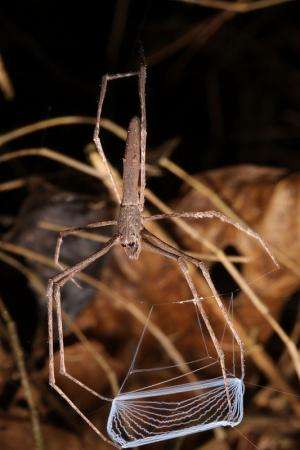Researchers make breakthrough discovery about evolution of spiders and their webs

A group of Auburn researchers has published a study that could overturn some long-held paradigms regarding spider web evolution.
Because of similarities in behaviors associated with web construction and the complicated nature of the webs, it has long been thought that all orb-weaving spiders shared a common ancestor. The study shows that spiders that weave orb-shaped webs are not all closely related and that the orb web was likely not the pinnacle of web evolution.
"Conversely, our data shows that rather than being highly derived, or evolved much later in spider evolutionary history, the orb web is actually quite primitive and evolved earlier than previously thought," said Jason Bond, a professor in the Department of Biological Sciences and director of the Auburn University Museum of Natural History, who led the study. "All spiders that make orb webs are not necessarily closely related. Based on our data, there are two unrelated lineages that make orb webs."
The data concluded that the classical orb web emerged in the Lower Jurassic more than 187 million years ago.
"The vast majority of spider diversity comes from an ancestor that spun an orb web; however, most of those lineages subsequently abandoned this web type in favor of other web architectures or altogether different strategies for capturing prey," said Bond.
The study, "Phylogenomics Resolves a Spider Phylogeny and Rejects a Prevailing Paradigm for Orb Web Evolution," is based on more than 300 genes sampled from 33 families of spiders to determine evolutionary, or phylogenetic, relationships.
It was conducted in collaboration with graduate students Nicole Garrison, Chris Hamilton and Rebecca Godwin, and students and faculty at Auburn University, San Diego State University and the University of Vermont.
"We are just one of a number of labs here in the Department of Biological Sciences that, as a consequence of some tremendous resources here at Auburn University, have been able to take advantage of the latest advances in DNA and RNA sequencing technologies and bioinformatics," said Bond. "Computational resources like the new CASIC high performance computing cluster and the HiSeq platform for next generation sequencing in the Auburn University Genomics and Sequencing Lab made this latest study possible."
More information: The study is available now at Current Biology online.
Journal information: Current Biology
Provided by Auburn University





















